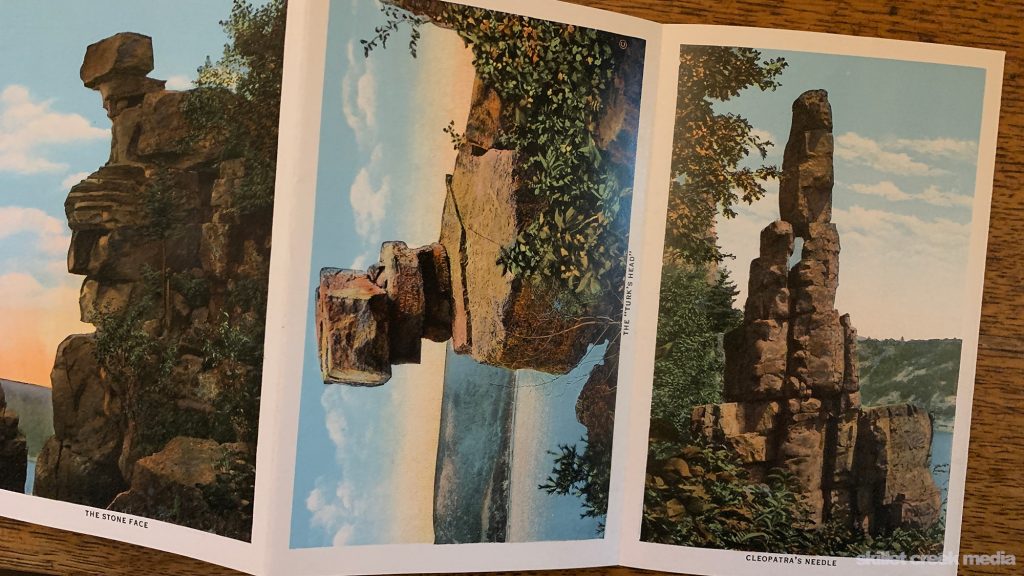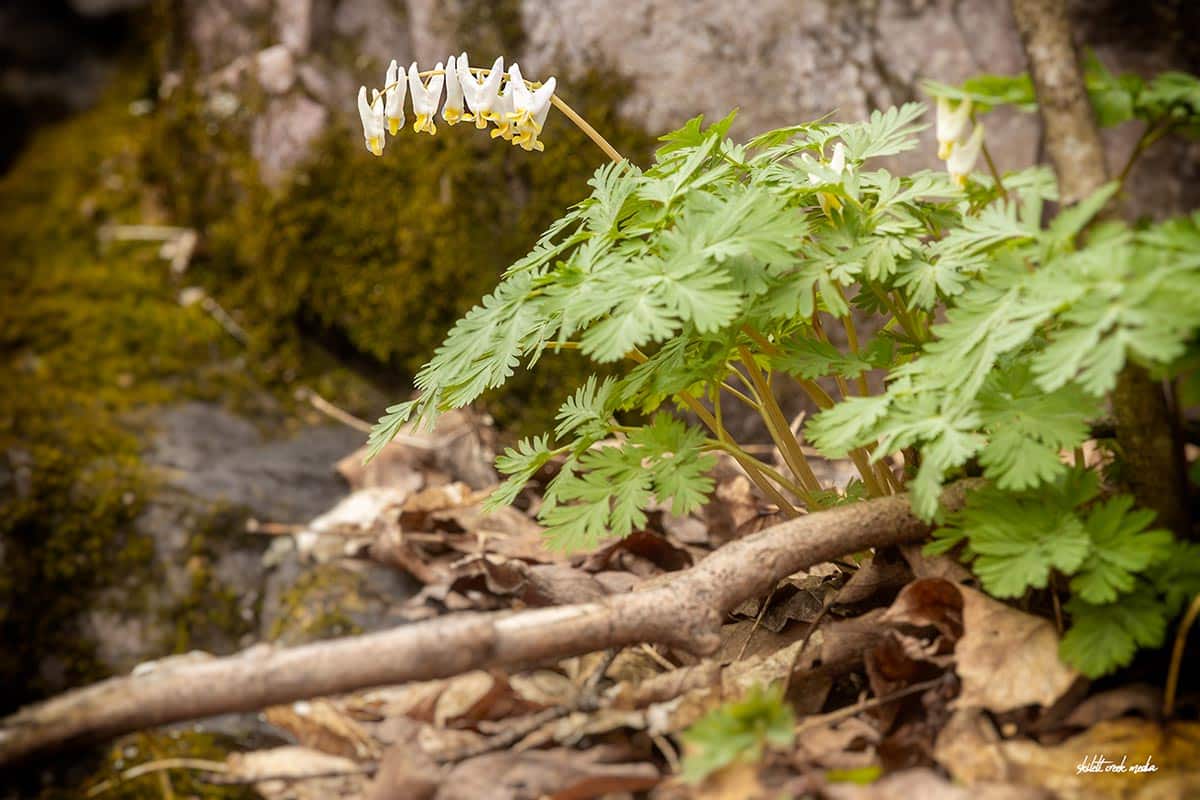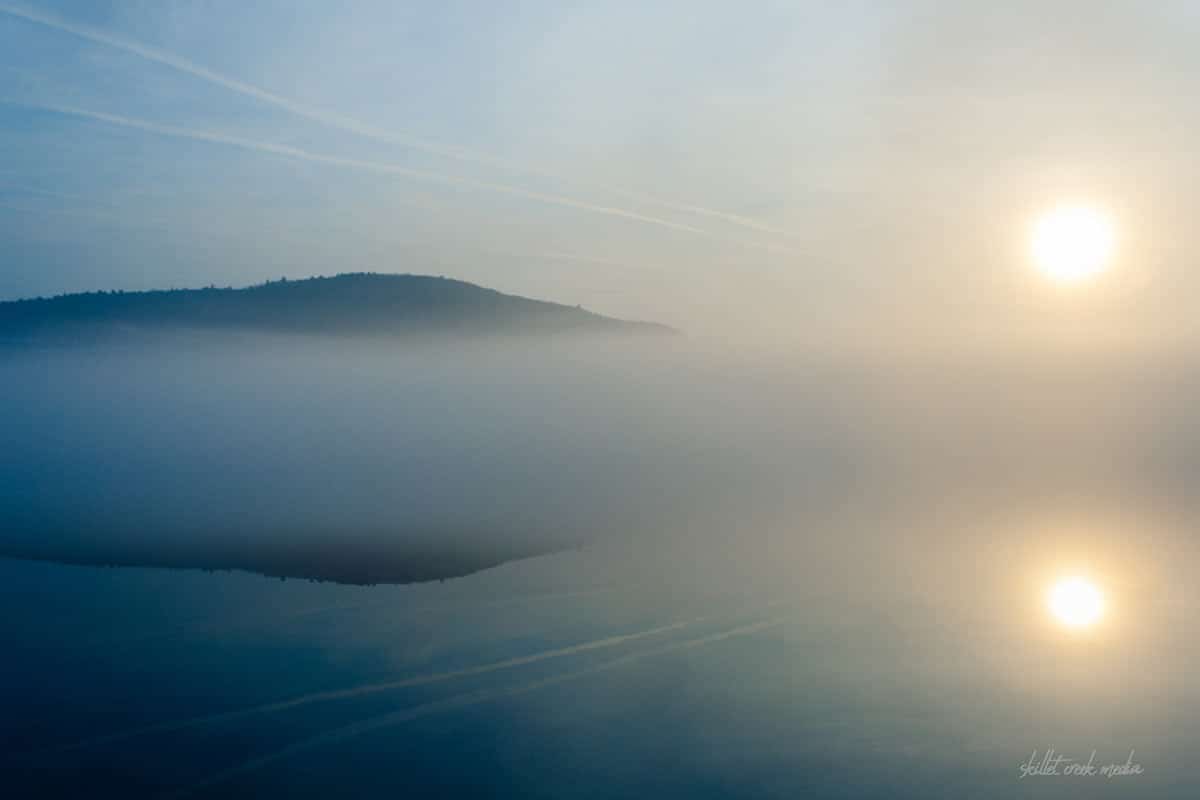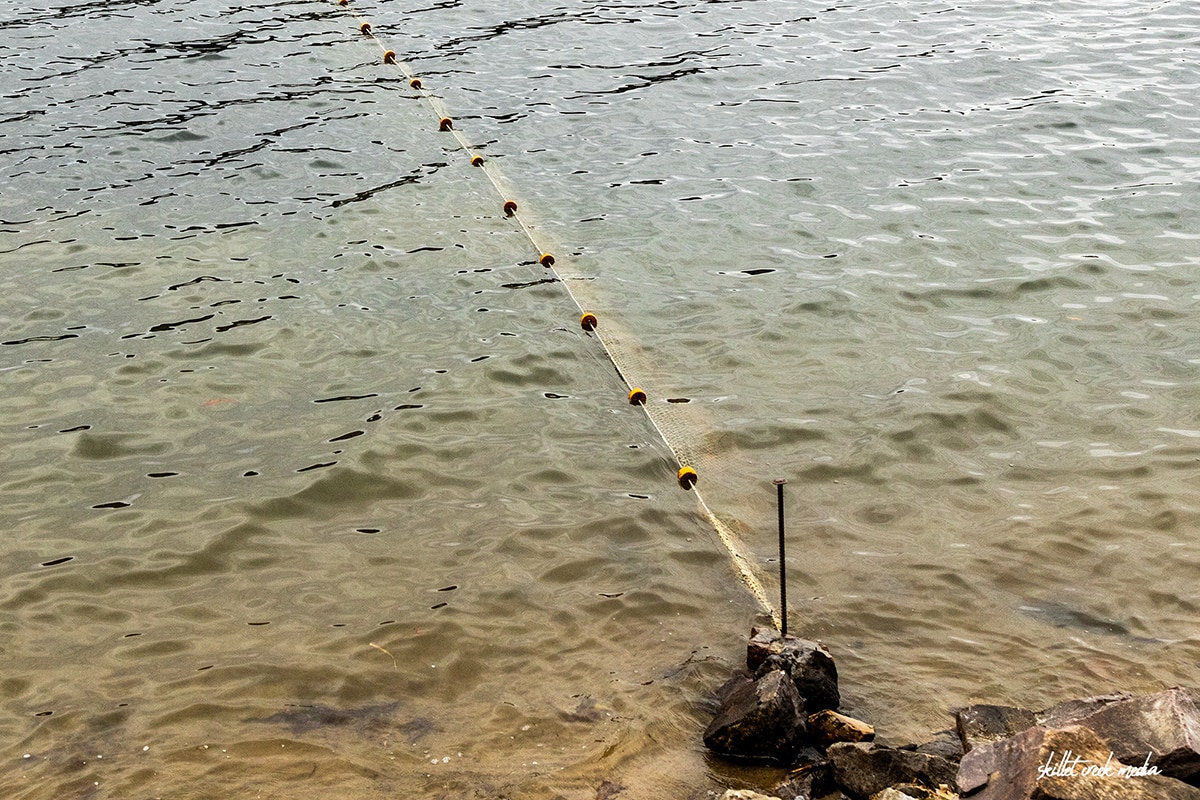Spring has sprung at Devil's Lake State Park, and with it comes a charming little…
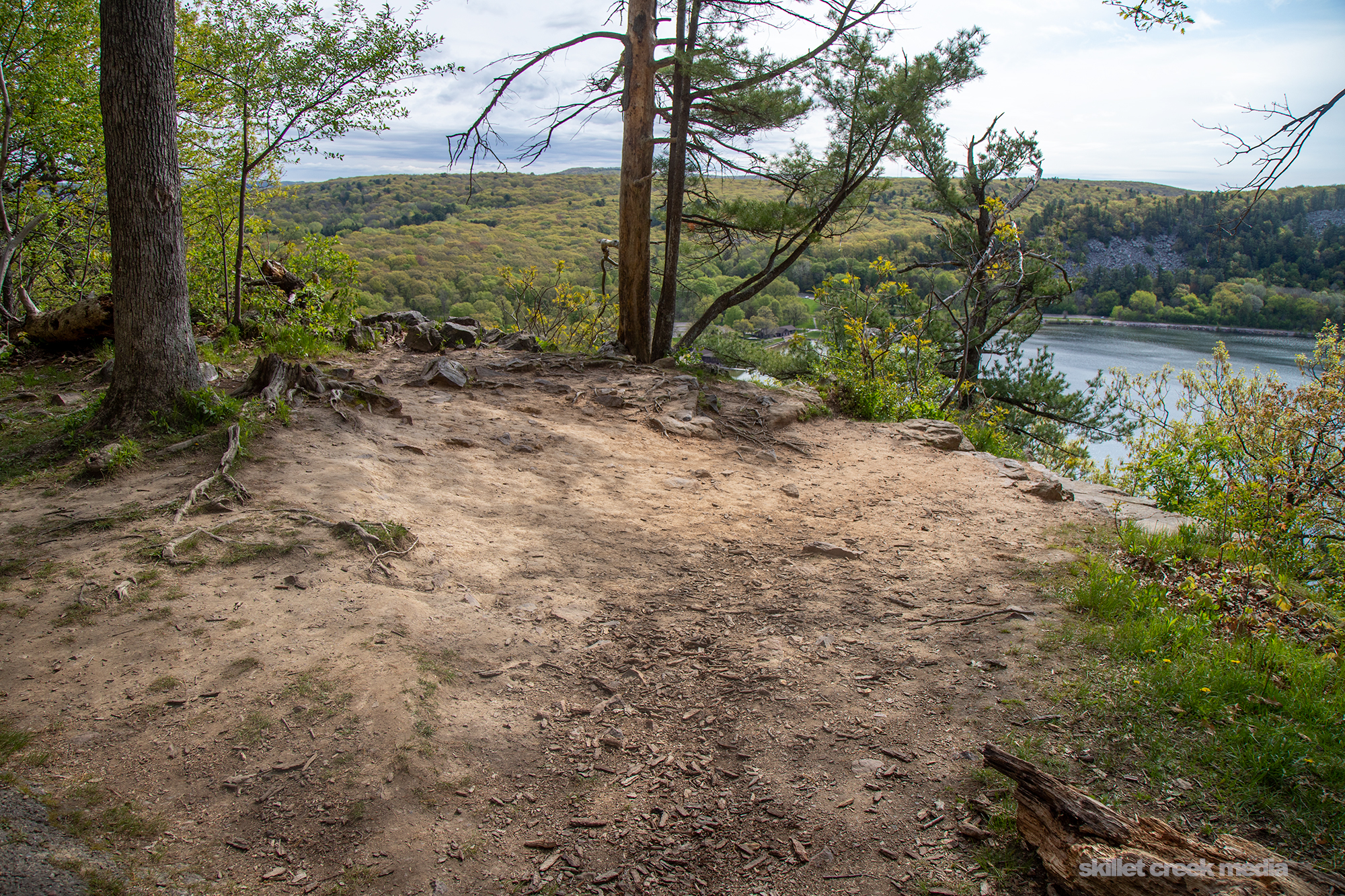
When we look around us or take in an amazing vista, or even look down at our feet while standing on one of Devil’s Lake State Parks many overlooks… Are we seeing nature? Well, sure. There are trees and plants and stuff but is that what we SHOULD be seeing in our natural world? Well, that’s tricky.
What Aldo Said
So, let me get a bit academic for a moment and quote our famous Wisconsin naturalist, Aldo Leopold. He wrote,
“One of the penalties of an ecological education is that one lives alone in a world of wounds. Much of the damage inflicted on land is quite invisible to laymen. An ecologist must either harden his shell and make believe that the consequences of science are none of his business, or he must be the doctor who sees the marks of death in a community that believes itself well and does not want to be told otherwise.”
Well, that’s harsh! But it’s true. He’s basically saying that if you don’t know what “nature” is supposed to look like, you can’t really tell if it’s healthy or not. Green is green. But we know that scientists all over the world are telling us that nature from plants to animals to the climate is in trouble. Thing is, if we can’t see it, if we don’t know what we’re looking at, it’s hard to… well, see the forest for the trees.
Is It Natural?
Anyway, have a look at the photo at the top of the page. This is from Devil’s Lake State Park’s west bluff, along the west bluff trail. It sure is a pretty view! But, is it natural? Well, yes, but no. There’s a lot more forest out there than there was 200 years ago. Back when regular fires were still part of nature’s process in Wisconsin, the bluffs had some trees, but not nearly as many as you see today. Early visitors to Devil’s Lake had no problem seeing rock formations like Cleopatra’s needle back then. It wasn’t hidden in the trees! Check out the postcard from my personal collection below. Cleo’s needle is the image on the right in the foldout.
Now look at that top picture again. This time look at the ground. It’s barren and cracked like dry clay. Is this how Devil’s Lake State Park’s cliffs should look? Well, no. Look at the photo below.
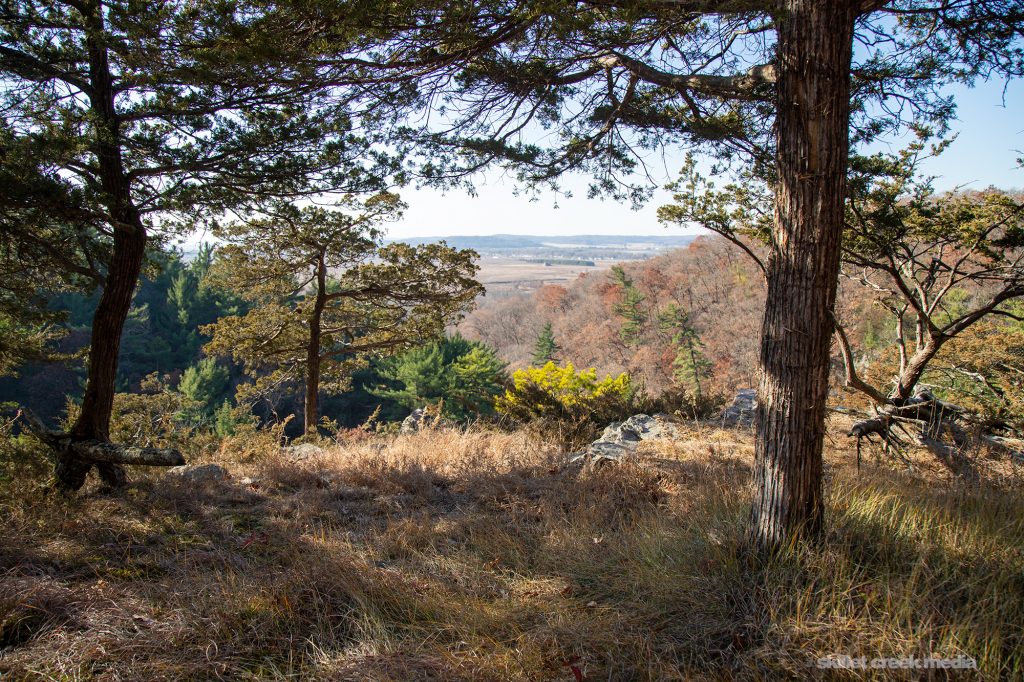
This (The photo above) is a very similar cliff edge in a “backcountry” section of the park. Notice the thick grasses and other plants? Often these grasses and mosses on a healthy cliff edge are soft like your favorite blanket. You can just lie down and take a nap on the soft earth! I know, I have! What’s more, these grassy glades on the cliff edges are homes to various critters and birds who can get everything they need to live right on the very edge of a high cliff. The plant life also keeps what little soil is on top of the rock from eroding away in the rain. This, in turn, allows the trees and other plants to grow. It’s that circle of life we talk about so often…
What’s Up With That?
So what’s happening with that lifeless-looking ground at the top of this article? Well, feet. You, me, and the millions of other park visitors who stand there every day. We’re crushing the life out of it. In fact, the ground gets so compressed that even if we stopped walking on it today, nothing could grow for years and years without help! And not just the cliff edges, but everywhere along the busy trails. Have a look below,
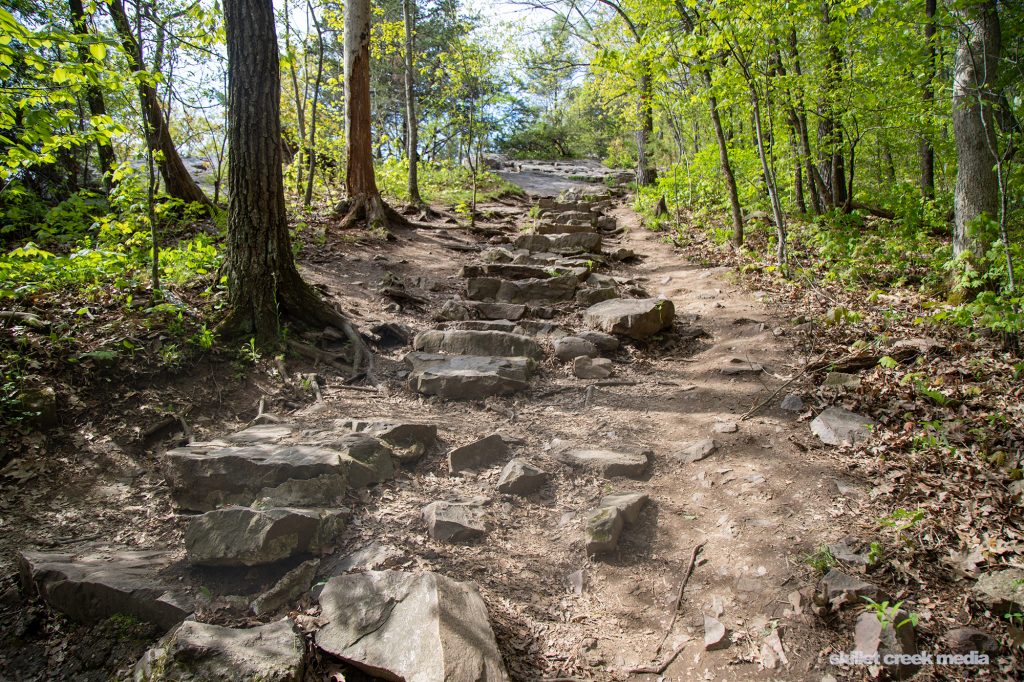
This is the popular “West Bluff Trail” staircase on the north shore of Devil’s Lake. Those rocks in the middle of that lifeless gully… that’s the trail. The barren area is where people walk to avoid the staircase and pass one another on busy days. The staircase was built by the Civilian Conservation Corps many, many years ago. Not too many years ago, it was surrounded by greenery. As you can see, not only is it falling apart these days, but the rocks now are just obstacles in a dry ditch that climbs up the bluff. And the rougher it becomes, the more people walk around it! Slowly the dirt is being eroded away, and even the staircase is losing its footing! And when it’s wet out there? Well, you can imagine!
How Can We Fix This?
Wow! What do we do? Yeah, that’s the question. Every busy national and state park has to adapt to its growth and popularity. Devil’s Lake is nowhere special in that regard. We’re loving our parks to death. As a park visitor, the most important thing we can do is to simply stay on the trails! This means not using all those little trails to “nowhere” you see out there and not using “unofficial” overlooks. That said, there’s a lot that can’t get better out there until WE fix it.
Now here’s the truth: In our modern world, we can’t expect the government to fix it. Most parks have neither the staff nor the budget to deal with the crumbling trails. Some may feel so overwhelmed that they have probably just given up. And yes, sometimes people just don’t care. The phrase I often hear is “It’s low on the priority list!” Yeah, well, whatever the reason, we often have to depend on volunteer groups, grants, donations, and the like. But volunteer groups are only as energetic is as their leadership. They have to be motivated advocates AND push for the guidance and support they need from the parks themselves. Even when officials may be dragging their feet. It has to be a team effort. But with many trails getting worse for years on end, you have to wonder if there’s any hope at all?
But Do We Need To?
So that brings me back to dear old Aldo Leopold and his thoughts about hardening your shell and making believe it’s not your problem or your business. In fact, some folks would like you to think that! Advocating for change isn’t always well received! But really, it’s our planet, our future, and our park. I think when more people realize what the landscape should look like, they’ll want it to look that way again. Maybe the more we open eyes to what they should see, those folks, maybe YOU, will get inspired to volunteer or earmark donations for fixing trails or restoring the natural landscapes. Maybe. On the other hand, maybe to most folks, the damage is indeed “invisible” as Leopold said. And if you can’t see it, you can’t know what you’re missing. In that case, maybe it’s all just fine the way it is.

For nearly 2 decades the Skillet Creek blog has focused on 3 main goals; To inspire you to visit and explore the Devil’s Lake region, to help you get the most your visit by sharing tips, events, and other helpful information. Lastly to advocate for our environment & wildlife and talk about how we can keep our natural areas amazing now and into the future! That last goal can sometimes cause controversy, but it’s the only way we can accomplish the first two. – Derrick Mayoleth, Owner.

